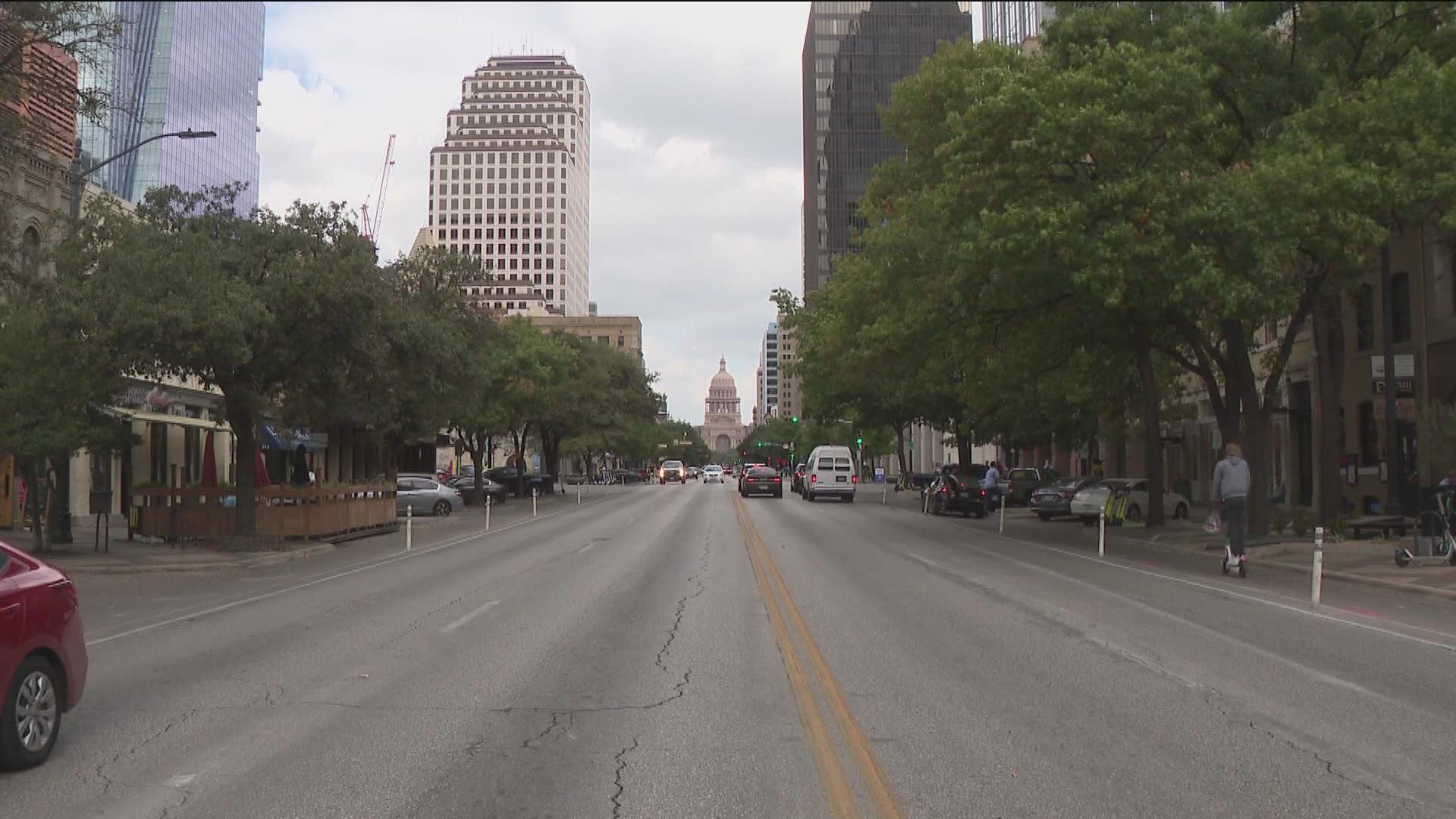AUSTIN, Texas — Austin area architecture firm Clayton Korte hopes to build new residential units and retail space on Congress Avenue. Specifically, the firm looks to build behind and above a historical landmark and contributing buildings, located at 316 Congress Ave. This includes the W.B Smith Building.
Because of the location and its involvement with a historical landmark, the build would first need approval from the Historic Landmark Commission. If approved, it would be the newest residential build on "Texas' Main Street" in over a decade.
The proposal shows a 55-story tower above ground-level retail that would consist of living spaces and moderately sized units for restaurants, office and retail use. According to Michael Whellan, a representative of the potential build, the project plans to preserve or rebuild all of the facades facing Congress Avenue.
Whellan said the developers want to preserve the history of Austin while aiding to the city's housing need.
“Having a structure that is new while including the old is special," Whellan said. "It’s a way to honor the past while also recognizing the needs of the future.”
The proposal also includes under and above-ground parking garages.
While the proposal has not been decided on and is only in the beginning stages, this is yet another effort to bring more housing to Austin to keep up with growing demand.
"We’re in a housing crisis, that’s undeniable," Whellan said. "We also know that there is not a lot of development yet on Congress Avenue. There’s obviously some but not a lot of new development on Congress Avenue.”
The Historic Landmark Commission considers any new build involving a historical landmark carefully, as Downtown Austin has protections and design restrictions that Witt Featherston, a HLC board member, calls Capitol View Court Orders. These rules limit the size and design of a building.
Featherston explained there are several different tiers of review for the Historic Landmark Committee, depending on the proposal.
"There are three big 'buckets.' There are existing historic landmarks, where we review and approve or disapprove modifications to those," Featherston said. "Then there are districts that are local and national. If it's local, we have say in dictating what happens to them. And then the third 'bucket' is applications for demolitions of potentially historic structures where we review the potential for [buildings] to be historic landmarks."
Featherston said sometimes there's overlap.
"People want to get new things in districts, but a building will hold a certain status ... So we ask ourselves, should we elevate it to a historic landmark?" Featherston said. "Everything that comes before us is a story."
While many embrace new additions to the city as people continue to move to Austin for jobs and lifestyle reasons, others want to preserve the "original Austin" as much as possible.
Featherston said the HLC looks to find that balance with new builds on the HLC board.
Whellan agrees with finding balance.
“I think Congress Avenue is a great example of where all of the elements in terms of resources come together to allow for a meaningful residential build,” Whellan said.
PEOPLE ARE ALSO READING:

